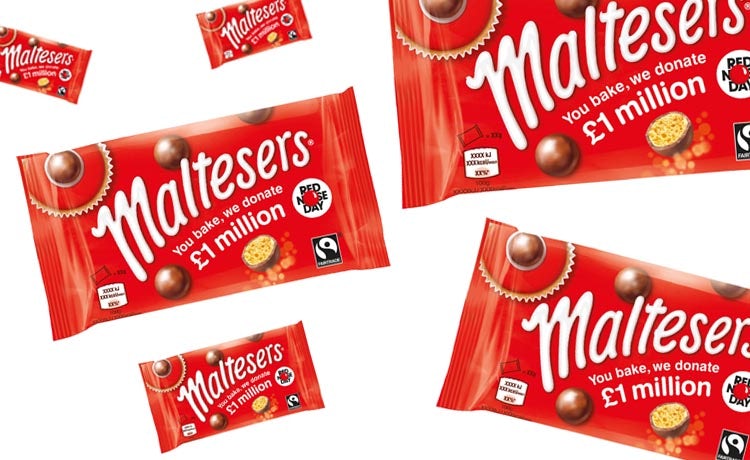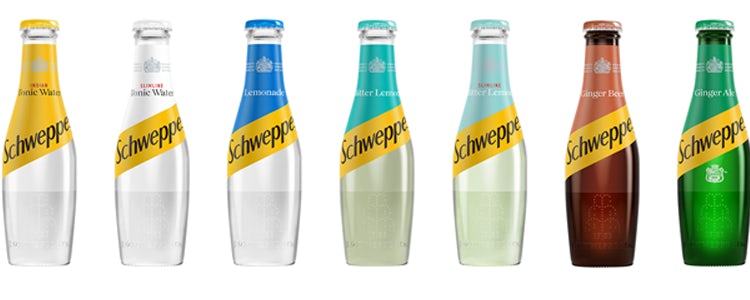Schweppes, Vodafone & Lidl – 5 things that mattered this week and why
Coca-Cola gives Schweppes an historic makeover
Coca-Cola unveiled plans to invest heavily in its Schweppes brand as it looks to tap into growing consumer demand for “quality” mixers and fight off newer competitors such as Fever-Tree.
The investment, its biggest in the UK in more than 200 years, aims to give the brand “a new beginning” as part of a 15-month campaign to reinvigorate the brand. The bottle for its ‘classic’ range is being redesigned, with the new shape modelled on the original Schweppes ‘skittle’ created by inventor Jacob Schweppe in 1783. And this is being backed up by a £6.6m campaign.
Coke says it wants to “re-establish the brand in the hearts and minds of consumers”. It is still the market leader, with a 32.6% share in 2016, but newer entrants such as Fever-Tree have been stealing its thunder. This revamp shows Coke recognises that and realises the need for change.
READ MORE: Coca-Cola overhauls Schweppes in bid to ‘future proof’ the business
Third-party viewability the sticking point for the brands that haven’t returned to advertising on YouTube
This week marked the return of the Festival of Marketing, with one of the most interesting talks a panel discussion about brand safety.
Despite Google pushing out various changes to improve brand safety on YouTube following a scandal earlier in the year that saw advertising appear next to extremist content, charity Marie Curie still isn’t convinced.
Steve Armstrong, head of digital at Marie Curie, told the audience: “We have very rigorous standards in terms of where we go and the levels of verification we use. YouTube doesn’t allow the ad verification tech we use in order to manage risk. So we have taken the decision that we will continue not to be present.”
Meanwhile, Dominic Chambers, head of digital at Jaguar Land Rover, used the panel to reaffirm his support for third-party verification from the likes of Google. He added: “Where there’s mystery, there’s a margin. It is all about third-party verification. They cannot be the ones to tell us the data we need to have.”
Armstrong’s comments are interesting as they show Google still has not done enough in the eyes of some marketers to alleviate concerns its platform is unsafe for brands. The majority are back advertising after the company introduced new controls and safeguards. But with Marks & Spencers also yet to return, there are advertisers expecting more.
READ MORE: Why some brands are still refusing to advertise on YouTube
Vodafone ditches ‘Power To You’ strapline
Mobile operator Vodafone has unveiled a new brand positioning, which fits around the theme of “future optimism”.
The new strapline, ‘The future is exciting. Ready?’, takes a deliberately more positive and bold outlook than previous campaigns. Vodafone is also revamping its visual identity, changing the Vodafone font and making its speechmark logo more modern with a 2D design.
The changes are backed up by the mobile operator’s biggest marketing campaign since it was founded 33 years ago. Launching in 19 countries, the 60-second film aims to show how human interaction must remain a constant even as technology evolves and imagines what the future will be like. For example, the ad looks at the services it can offer farmers via drones.
Vodafone has often been criticised in the past for its dull advertising and lack of creativity. This new positioning and campaign suggests it has taken that criticism on board and looked for ways to elevate its brand.
It is also clearly trying to talk to consumers about emerging tech such as drones early on so that when they go mainstream it can operate from a position of brand strength.
Lidl questions the power of programmatic advertising
Programmatic advertising was one of the key reasons behind the brand safety scandal. But for Lidl’s head of media Sam Gaunt, there are other issues with the digital tech. He revealed he believes many marketers have overinvested in programmatic, which he said doesn’t have the ROI of other media including TV, print and radio.
“The marketing industry has been guilty of overselling programmatic,” he explained at the Festival of Marketing. “There’s a large amount of overinvestment by marketers in the programmatic sphere who sit within brands that have no real strategy. They don’t know how much they are spending on programmatic or where this advertising is going.
“I’m not trying to sound pessimistic but trying to make the point that there’s still a long way to go until we reach that nirvana of really understanding how programmatic can work effectively and generate an impressive ROI.”
Gaunt is one of the few marketers to voice concerns about the effectiveness of programmatic. And while Lidl might have unique circumstances that mean programmatic doesn’t fit its strategy as well as for others, the comments suggest a lot of marketers may have rushed to invest in programmatic without fully weighing up the consequences.
READ MORE: Lidl on why programmatic is new, shiny and overvalued
Maltesers named ‘Brand of the Year’

This week also saw our 2017 Masters of Marketing Awards. Mars and Procter & Gamble were the big winners, with Maltesers and P&G’s brand chief Marc Pritchard claiming the gongs for ‘Brand of the Year’ and ‘Visionary Marketer of the Year’ respectively.
Maltesers fought off the likes of Tesco, Brewdog, Just Eat and Amazon to claim the top prize, and was praised by the judges for achieving what is seen by some in marketing as the “holy grail – doing well by doing good” for a campaign that put inclusivity at its core.
Pritchard was named ‘Visionary Marketer of the Year’ thanks to his quest for transparency in media buying. The two headline winners show that taking a bold stand can sometimes pay off.
READ MORE: Maltesers named ‘Brand of the Year’ at Masters of Marketing







